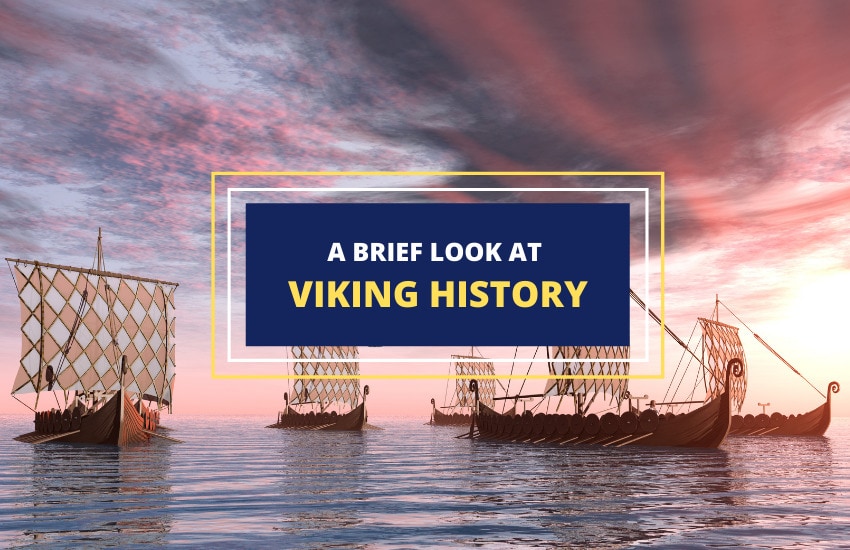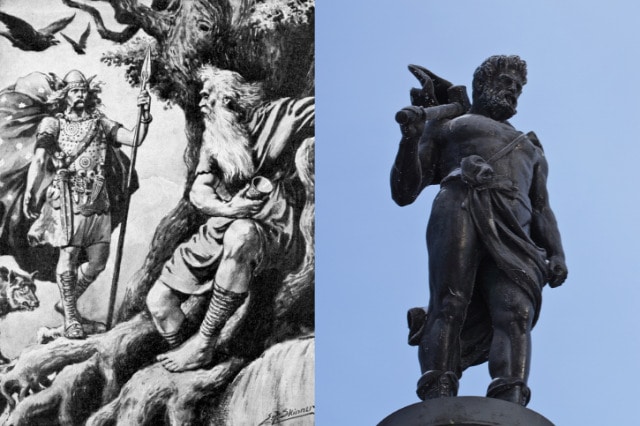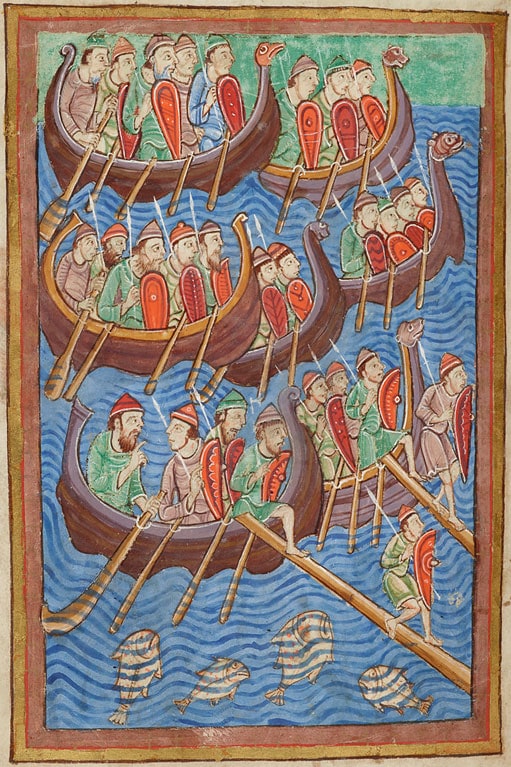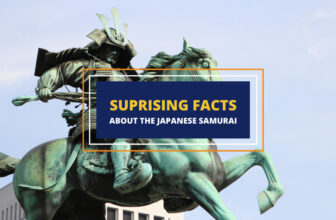
Table of Contents
Historical accounts and the mass media have built a distinct image of what Vikings were: bearded, muscled men and women clad in leather and fur who drank, brawled, and occasionally went on seafaring expeditions to pillage distant villages.
As we will see in this article, not only is this description inaccurate but there is also much more to discover about who the Vikings were and why they are still important today.
Where Did The Vikings Come From?
The Anglo-Saxon Chronicle, a late 9th-century collection of English historical annals, reports the first arrival of Vikings to the British Isles in 787 AD:
“This year King Bertric took Edburga the daughter of Offa to wife. And in his days came first three ships of the Northmen from the land of robbers. The reve (30) then rode thereto, and would drive them to the king’s town; for he knew not what they were; and there was he slain. These were the first ships of the Danish men that sought the land of the English nation.”
This marked the start of the so-called “Viking Age”, which would last until the Norman conquest of 1066. This also began the black legend of the Vikings as a merciless, disorganized tribe of pagans who cared only about robbing and killing people. But who were they really, and what were they doing in Britain?
The Chronicle is right in that they were Northmen who arrived by sea from Scandinavia (modern Denmark, Sweden, and Norway). They had also recently colonized small islands in the North Atlantic such as Iceland, the Faroe Islands, Shetland, and Orkney. They hunted, fished, cultivated rye, barley, wheat, and oats. They also herded goats and horses in those cold climates. These Northmen lived in small communities ruled by chieftains who attained that office through demonstrations of bravery in battles and gaining prestige among their peers.
Viking Myths and Tales
Some of the Viking chieftains’ exploits are described in detail within the sagas, or Icelandic histories, written in the Old Norse language. However, not only real people were featured in their stories but also strange mythical beings and gods.
A whole world populated with trolls, giants, deities, and heroes are described in another corpus of literature known as the eddas. Different classes of gods are described in the eddas, the most important ones being the Æsir and the Vanir. The Aesir were essentially bellicose and lived in Asgard. The Vanir, on the other hand, were peacemakers who dwelled in Vanaheim, one of the cosmos’ nine realms.
Viking Gods and Goddesses

Odin, the Allfather, was the foremost god in Viking mythology. He was believed to be an extremely wise old man who was called when war was imminent. Odin was also the god of the dead, poetry, and magic.
At the top ranks of the Æsir we find Thor, Odin’s son. the strongest and foremost among all gods and men. He was the god of thunder, agriculture, and the protector of mankind. Thor was often depicted as a giant slayer. Thor led the Æsir in their battle against the giants (Jötunn), who threatened to destroy the human race. Of course, Thor and his clan managed to defeat the giants, and humankind was saved. He also defended Asgard, the realm of the gods.
Freyr and Freyja, a twin brother and sister, although commonly regarded as Æsir, lived among both clans at one point or another. Freja was a goddess of love, fertility, and gold, among other things. She was said to ride on a chariot pulled by cats, clothed in a feathered cloak. Her brother, Freyr was the god of peace, fertility, and good weather. He is seen as the ancestor of the Swedish royal house.
Apart from these major gods, Vikings had several other important deities, who all played a part in their daily lives.
Other Supernatural Entities
There were many more non-human entities in the eddas, including the norns, who controlled the fate of all living things; Valkyries, beautiful and strong female warriors selected personally by Odin who could heal any wound; elves and dwarves who occasionally lived underground and worked as miners and blacksmiths.
The writings also speak of several beasts such as Fenrir, the monstrous wolf, Jörmungandr, the giant sea-serpent that surrounded the world, and Ratatösk, the squirrel that lived in the tree at the center of the world.
Viking Voyages

The Vikings were proficient sailors and they colonized most of the North Atlantic isles from the 8th to the 12th centuries. The reasons for their departure from their home in Scandinavia to settle abroad are still the subject of debate.
Little investigation has been done into the cause of this expansion and exploration beyond their Scandinavian boundaries. The reason given most often was a population explosion and resultant land shortage. Today, this hypothesis of a forced migration due to population pressure has been largely abandoned, as studies show that there was sufficient land available in their homelands.
More likely, these migrations were enterprises led by local chieftains who felt their power diminished by the competition of powerful neighbors or other rulers who wanted to unite their territory into one kingdom. The chieftains opted to look for new lands across the sea.
The Vikings first settled in Iceland in the 9th century, and from there headed to Greenland. They also explored the northern islands and coasts of the North Atlantic, sailed south to North Africa, east to Ukraine and Belarus, and settled in many Mediterranean and Middle Eastern lands.
The famous expedition of Leif Erikson, son of Erik the Red, discovered North America and set up camp in Newfoundland, Canada.
Impacts of the Vikings on Modern Culture
We owe many things to the Vikings. Our culture is filled with words, objects, and concepts that we inherited from Norsemen. Not only did they make huge improvements to sailing technology, but they also invented the compass. As they needed to travel long distances through snowfields, they invented skis.
Old Norse had a lasting impact on the English language that now has expanded around the globe. It can still be recognized in words such as leg, skin, dirt, sky, egg, kid, window, husband, knife, bag, gift, glove, skull, and reindeer.
Towns such as York (‘Horse Bay’, in Old Norse), and even the days of the week are named using Old Norse words. Thursday, for example, is simply ‘Thor’s Day’.
Finally, although we no longer use runes to communicate, it is worth mentioning that the Vikings developed a runic alphabet. It was comprised of elongated, sharp characters designed to be easily carved into stone. Runes were believed to have magical powers too and were considered a sacred form of writing, destined to protect the deceased when inscribed on someone’s tomb.
The End of the Viking Age
Vikings were never conquered in battle or subdued by a strong enemy army. They were Christianized. The Holy Roman Church had established dioceses in Denmark and Norway in the 11th century, and the new religion began to expand fast around the peninsula.
Christian missionaries not only taught the Bible but were also convinced that they needed to completely change the ideologies and lifestyles of local peoples. As European Christendom assimilated the Scandinavian kingdoms, their rulers just stopped traveling overseas, and many of them gave up warring with their neighbors.
Moreover, the medieval Church proclaimed that Christians could not own fellow Christians as slaves, effectively ending an important part of the old Viking economy. Taking prisoners as slaves was the most profitable part of raiding, so this practice was eventually abandoned altogether by the late 11th century.
One thing that did not change was sailing. Vikings continued to venture into unknown waters, but with other objectives in mind than looting and pillaging. In 1107, Sigurd I of Norway assembled a group of crusaders and sailed them towards the eastern Mediterranean to fight for the Kingdom of Jerusalem. Other kings and Scandinavian peoples participated in the Baltic Crusades during the 12th and 13th centuries.
Wrapping Up
The Vikings were not the blood-thirsty heathens portrayed in English sources, nor the barbaric and backward peoples that popular culture describes. They were scientists, explorers, and thinkers. They left us with some of the finest literature in history, left their mark on our vocabulary, and were proficient carpenters and shipbuilders.
Vikings were the first people to reach most islands in the North Atlantic Ocean and even managed to find America before Columbus did. Today, we continue to acknowledge their priceless contributions to human history.








